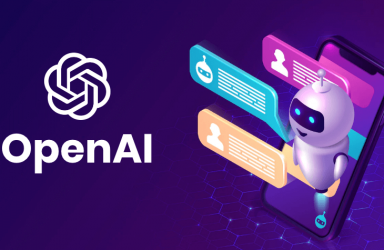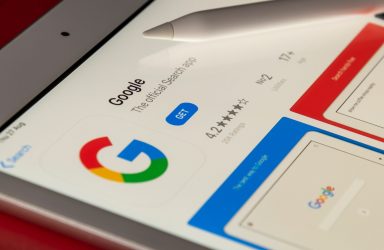Welcome to Digital Clarity’s video explainer – What the FLoC?
Transcript:
Hello I’m Rachel Mepham from Digital Clarity. Today we’re going to try and break down some simple versions of some confusing terms. We’re going to be talking about Google FLoCs, cookies, the difference between first and third-party cookies, tracking, what that means for you and why B2B have it even harder.
You’re going to have loads of questions I’m sure.
So let’s get started. What is a cookie?
A cookie is a file which captures information about you and your online preferences and it sits on the browser which you’re actually using. So on your computer you’ll be using a variety of different browsers, today we’re mainly talking about Google Chrome. It’s one of the most vastly used browsers and there’s some news which you may or may not have heard, but cookies essentially are pieces of script and they they sit on that browser and they will capture information about a number of different things. One of the things that you’ll have noticed will be that on every site you go to there’s little pop-up or a bar across the top or bottom which says “do you want to opt into cookies?”
Now many of you may or may not know what that actually means, so I wanted to give an example here. This particular screen grab is taken from the BBC website and what it shows us here is, we’ve got to this by clicking on that settings button when you get the pop-up to say do you want to allow cookies.
It gives us three tiers of cookies. The first tier is: cookies that are strictly necessary, meaning that the website won’t actually function correctly unless you allow those particular cookies. Now they’re not doing any harm to you, they’re not capturing any information about you as an individual, they’re not listening to you or whatever, they’re just there to to make the website function correctly.
Functional cookies are a deeper layer of that. So it remembers things such as something that’s in your basket or maybe your login details, so when you press to log in it will remember your username. Those types of cookies allow you to have a better user experience throughout the site and it makes it easier for you to utilize that site for what your personal needs are.
The third level of cookies here is the performance cookies and this is all about allowing the BBC to improve their website to make it better. In order to do that they more than likely are capturing information about where you’re clicking what you’re clicking on, how many times you’ve been to the site, whether you’re returning. There may be scripts on there for different tools that they’re using etc. There’s lots of very different types of cookies and that’s important to understand.
There’s a variety of types of cookies and today we’re going to talk about a first-party cookie and a third-party cookie.
So let’s start with the first-party cookie.
A first-party cookie is a file created which stores data about you directly on the website that you are on. So that could be a website that you’ve visited, you could have set the language settings to English. The next time you go back to that site it remembers that you have set that particular setting to English and it delivers you the content there for in the right language.
Equally it may remember information about what you put in your shopping basket the last time you visited, how many times you’ve visited the site, so it’s all information about you but when you’ve been on that particular site. So you go to a website, they drop that first-party cookie on you, and then they know that when you come back it’s you and it’s a more personalised user experience.
Now, what’s a third-party cookie?
So a third-party cookie is a file which stores data about you, but not necessarily from the website that you’re on at that particular time. So it tracks across multiple websites.
Now this could be where an advertising platform has dropped a cookie on you and it’s understanding your user behaviour across different sites and then it can use that information to then retarget you with an advert that’s relevant. So let’s look at an example of that.
You visit a website you’re interested in a pair of shoes.
A third-party cookie is dropped and it’s associated with the information about that particular product, that pair of shoes. So then when you go on and you see certain ads on a website you can see that there’s an ad specifically targeted to you about that pair of shoes. Simple right?
What is a Google FLoC?
There’s loads of information out there, it’s quite confusing, I wanted to try and break it down and really get my head around this a bit more clearly. I’m not a tech head, I am a marketeer so I’m all about strategy and how to get the right messages to the right people. So it’s important to break these things down and try and really understand the technicalities behind it in the most simple way. A Federated Learning of Cohorts.
Okay but what does that mean?
A ‘federated learning’ is a generic, machine learning model. That model improves based upon anonymised data which is encrypted and it’s fed back to the local devices. Now that sounds kind of confusing and what does that actually mean?
So let’s try and visualise that a little bit more. So if we think of the devices as being mobile phones. There’s an original model and mobile phones pass information or pass reporting back to that model which is anonymous. It’s based on individual devices and their encrypted, summaries of information. That summary of information allows that model to be passed through machine learning, so it uses AI to improve and enhance that particular model. Then when that improved model is passed back to your device, you get a much more improved user experience.
So it’s basically taking learnings from lots of groups of different things and automating that with an algorithm, to improve it and deliver a better performance overall.
What does the cohorts part mean? Well this means groups of people with shared qualities or interests.
In 2022 Google Chrome will no longer support third-party cookies. Whoa! Okay what does that mean for me?
Well current testing means that there needs to be a balance between user privacy and protecting your own personal data, but also the functions that advertisers can use to control the advertising and make sure that it is being delivered to people of interest.
So in simple terms:
- Ads could be run, based on local, anonymised, predicted behaviour, (federated learning) of groups of people with shared interests (the cohorts)
In simpler terms:
- Google will show you ads, based on what they think you’re interested in.
Let’s look at an example to try and get our heads around this a little bit more. Let’s take Netflix.
So person A has a number of different movies that they are interested in. Let’s say an action movie, right. Person B has then watched six different movies, all action movies. Some of those are the same, so they’re not identical but they’re very similar and therefore the ninth movie is one, based on the algorithms, that is predicted to be liked by both those users.
What does the end of third party cookies mean for you?
Well there’s still loads of unknowns and there’s lots of different theories and lots of different testing going out at the moment. But there is one thing that is clear. You need to be nurturing and understanding your customers.
Now, if you’re B2B, that may be easier said than done.
B2C’s have loads of data available. They’ve got customer purchase data. You go on the website as a user you buy a product, there’s information captured about that. The B2C can then understand what types of products you’re looking at, what you’re interested in and that’s all from first party data. It’s the data from you, on their website that you’re sharing with them. B2Cs can easily incentivise you to capture your data. An email with a discount, a potential discount if I go back to the site and fill in a survey.
So it’s much easier in a way for a B2C to capture data, incentivise data, and then use that data to better improve how they’re understanding their user behaviour, their audience behaviour.
However, how can B2Bs understand their clients better, without third party cookies to help them to reach the right customers?
Here’s some ideas let’s run through them.
Sign Up or Log In
The first one, where possible (and it’s not going to be right for everyone) but where possible, if you can get a user to sign up or log in so they’ve got a profile then that’s a first party data way of capturing information about them. They’re sharing certain details with you, their name, their email, maybe the company they work for, maybe a little bit of detail about what they’re even interested in.
Account Based Marketing or ABM
This is really talking about matching the marketing teams strategies and the sales team strategies and data that both of them have in order to better understand your customer profiles. Once you understand those you can then enhance your marketing to be more effective.
SEO and PPC
Now people are always going to be actively looking for things that they want. Whether it’s a product or a service. So really SEO and PPC shouldn’t be hugely impacted by this because people are still looking for your products and services when they go to the likes of Google, or Microsoft, or any other platform to try and find what they’re looking for. So as long as you’re appearing in front of the right ones, for the right search terms, and the right queries, with the right ad, you should find the right people.
Google User Interests
Display advertising, to anonymous users, who are grouped based on shared interests. The FLoCs.
Inbound Marketing
Creating content that’s solving problems, answering questions, being useful content, rather than just content for content’s sake. And what that does is that builds trust, that builds knowledge, that enables you to position your brand as a thought leader. So that when people are making decisions they think of you first. They come back to you. They trust you.
LinkedIn ads
LinkedIn captures first party data from their customers, from their clients. You sign up to a LinkedIn account, you share certain information about yourself with them. That advertising that runs on LinkedIn is therefore already protected by those privacy policies because they are direct with LinkedIn and their user base. So therefore running LinkedIn advertising is actually something that’s still going to be really effective.
There’s going to be question marks about you know the element of remarketing and if you go away from the LinkedIn environment to a different site, then obviously that’s going to change. But if you’re within the LinkedIn environment then there’s data that users have shared, which you can still utilize to be able to advertise and reach those particular individuals.
Social Amplification
Using Inbound Marketing content but amplifying that out across other channels. So that may be any of your social networks that you have. But it’s really important to understand that each of those different social networks, those social channels, have a slightly different audience and they have a slightly different tone. Don’t just push one piece of content out in the same way across all of those channels because it may not be effective on one channel to the next.
Contextual Advertising
And then going back full circle to sort of nearly where the roots of Google display advertising came from, is contextual ads. So advertising on publications, on articles, alongside content that matches the user’s interests. So if I’m reading an article about a particular subject, advertising may be shown alongside that article that is related and therefore matching my level of interest, to what I’m what content I’m consuming at that particular time. So potentially the customers are already interested, because they’re reading information about that subject matter.
YouTube Ads
Similar to matching to your audience contextually, this is the same but it’s on video. So finding channels and content on YouTube that’s relevant to your target audience and advertising alongside that, whether that be via video ads, or whether it’s text or image ads.
In short
- Cookies are good and bad – Good, because they help to improve performance. Bad because there’s a negative stigma that they’re trying to steal your data
- Third-party cookies will fade away
- FLoCs are a way of Google working around the current changes to getting rid of third-party cookies
- B2B advertisers need to be planning now
- AdTechs need to be innovating. They need to be coming up with new ways of delivering ads to the audience.
Some final thoughts on Google FLoCs
Just to add to everything we’ve been through today, there’s also recent news and articles out there about Amazon not allowing FLoCs. So how will that potentially impact Google? That’s a whole other discussion that we may bring up on another video. Also Google Privacy Sandbox – something to look into to do some further research on. It’s their testing platform which is running lots of different APIs and ways of working around these current challenges. And finally advertising agencies need to swap up on this stuff. It’s coming it’s gonna be here quicker than you know it. So make sure you do your research so that you can advise your clients on planning now, rather than when it’s too late!
For any more content like this, or if you have any other questions, get in touch, email me, follow our social media channels and make any comments. We’d love to hear what you’ve got to say.







